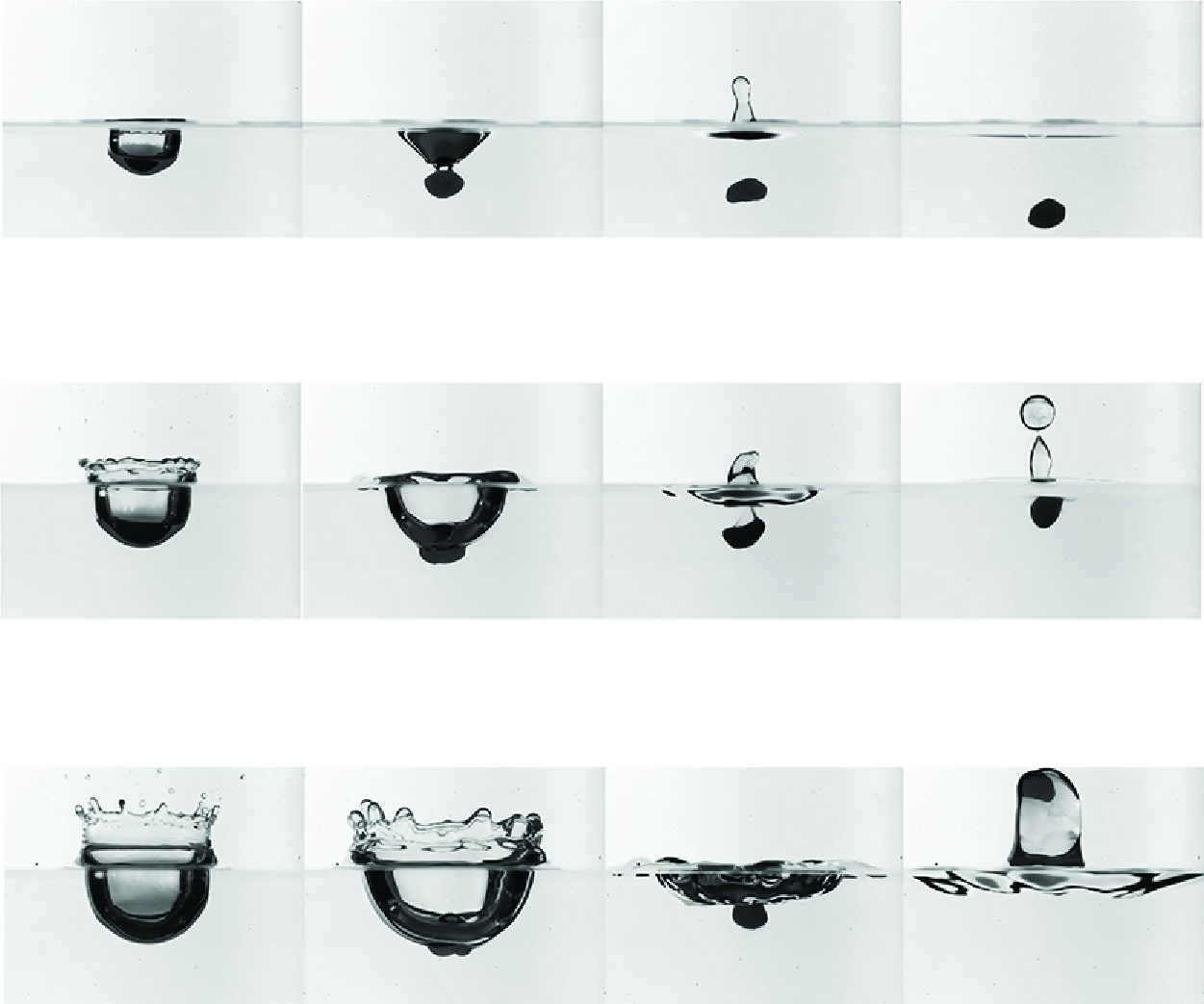No CrossRef data available.
Published online by Cambridge University Press: 13 June 2025

The interaction between elastic structures and fluid interfaces, known as ‘hydroelastic’ problems, presents unique challenges to classical frameworks established for rigid spheres and liquid droplets. In this work, we experimentally demonstrate an intriguing phenomenon where ultrasoft hydrogel spheres rebound from a water surface at high impact speeds, even when their density exceeds that of water. We further propose a theoretical force-balance model, incorporating energy redistribution and potential flow theory, to predict the critical impact speed for the transition from sinking to rebounding, as well as the temporal evolution of both spreading diameter and cavity expansion. Our findings extend the classical Weber- and Bond-number-dominated paradigms for rigid spheres and liquid droplets, demonstrating that hydrogel dynamics is controlled by a modified elastocapillary Mach number, with rebound achievable even for hydrophilic spheres. These findings improve the understanding of soft-impact hydrodynamics and offer design principles for applications in biomimetic robotics and energy-absorbing materials.